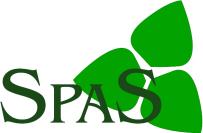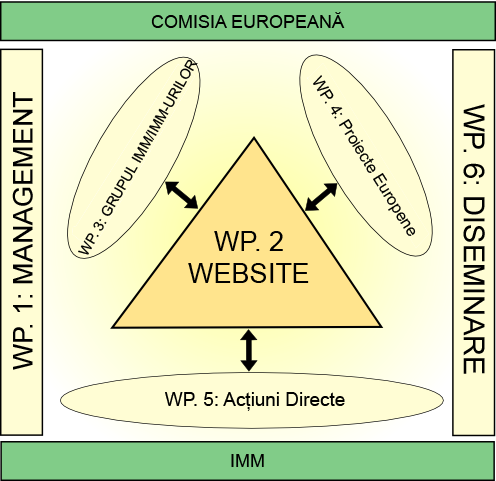WP2
The aim of this WP is the development and implementation of a Website that will constitute the centre of the project since it will be the user interface and the services and tools provider. Website will allow to SMEs to share information with other SMEs with similar innovation needs and to be in permanently contact with the project partners who will provide them assessment in the participation in European projects.
The aim of the WP is to develop a website that will provide users:
- Information point about all the project development
- A working space tool in order to share information and needs with other enterprises
- Updated information about the European necessities for research projects that are able to be covered by SMEs
- To appear in a database where project coordinators should look for new partners
- To access to EC information in a guided way, easing the required procedures
- To contact experts that can assess them in their own language
A new web site has been planned in order to provide of higher identity to the project. All partners will include in their own web sites a link for SPAS site, so visitants can link to the project web site and get larger information.
WP1
The objective is the global co-ordination of the project, with a scheduled inspection of the work to assure the fulfilment of the objectives and the correct coordination.
Co-ordination of the project from the administrative, technical and strategic point of view includes the following activities:
- Liaison with the EC, implementing the adequate reporting and reviewing mechanisms.
- Financial management of the project.
- Putting in place the adequate consortium communication platform.
- Coordination with other related projects.
- Risk management and contingency plans.
Assessment of milestones within the particular WP (self-evaluation) and within the project (external evaluation) by the general coordinator and/or the commission
Expected Results
The platform will make possible the confluence of research efforts and technology transfer, increasing the SMEs technology level, as well as easing the carrying out of new technological ideas for the future sector.
The potential impacts of the project are given by:
|
|
Objectives
|
1 The main objective of the underlying Coordination Action is the creation of an international network of organisations capable to give a mentoring service to SMEs working in the agro-food sector, providing them opportunities to participate in the FP6 and FP7. SMEs participation will comprise: Due to their importance in terms of human nutrition and health, SPAS will pay a special attention to innovations in the food-safety, organic food and functional food areas. |
2 The project starts with the homogenization of activities and will develop a Best Practice Guide for trans-regional co-operation in order to encourage and guide SMEs towards the most appropriate instruments, in particular IPs and NoEs in the FP6 and further advances produced in the FP7. |
|
|
3 Creation of an international structured pool of enterprises. SMEs will be identified and selected by consortium members in their own different regions in order to create an international structured pool of enterprises promoting emerging synergies among them. SMEs will be able to registered and get an on-line technology audit through the web-based tool. The tool will be developed within the project, starting from a self-assessment web tool designed by CARTIF and BESEL in a previous national project (www.cartif.com/dympyme). |
4 The consortium will identify, contact and follow on going proposals, tenders, projects, and FP7 calls for proposal as well as technology platforms creating a dynamic on-line and updated information repository that will facilitate communication with SMEs and their participation in further tenders or memberships. |
|
|
5 The website, which plays a key role in the project, is focused in promoting interaction among all organisations. It will include a great variety of proactive tools and services. |
6 Results will be disseminated at regional and European level expecting that new entities from new countries will be interested in joining the platform. |




